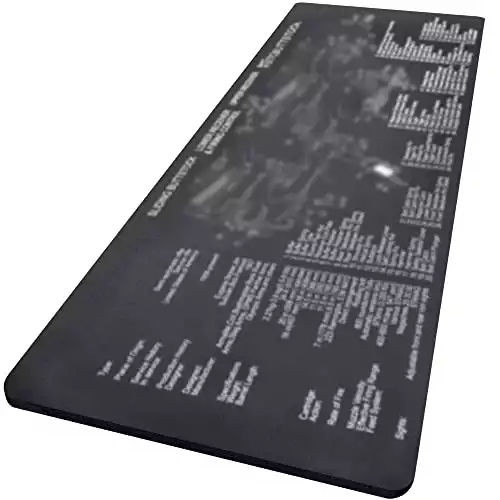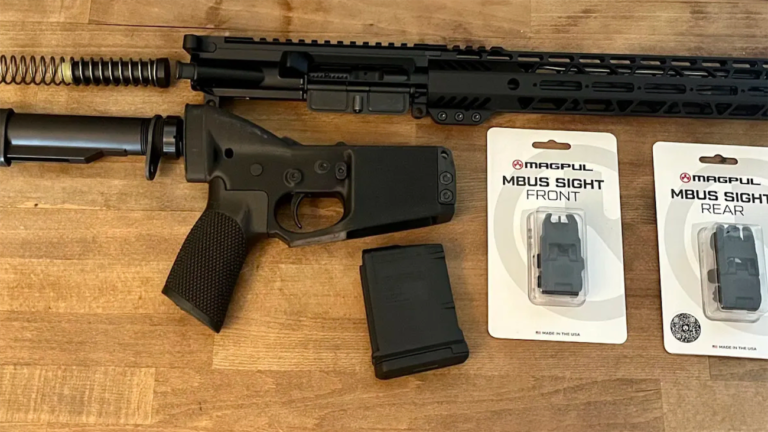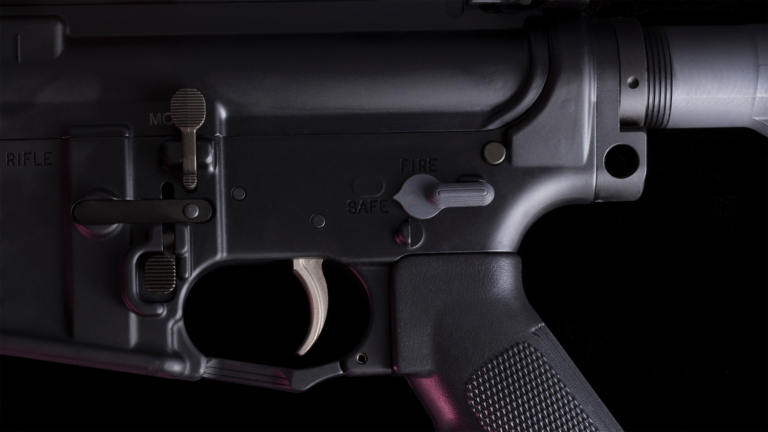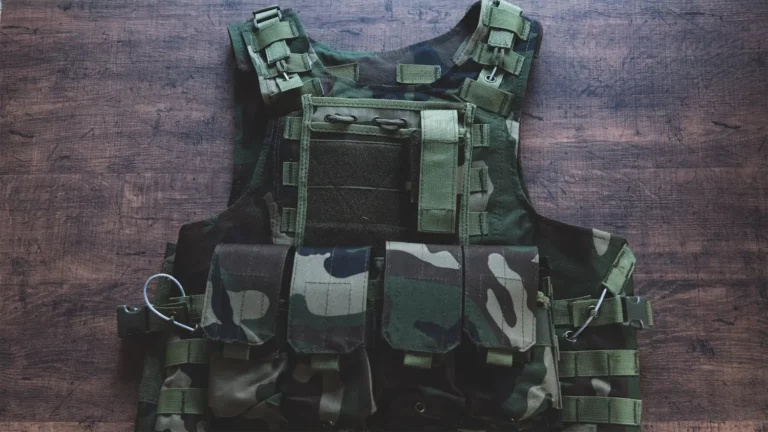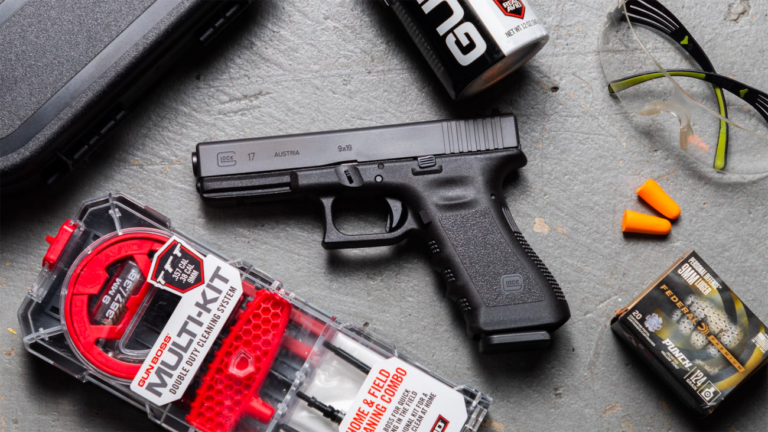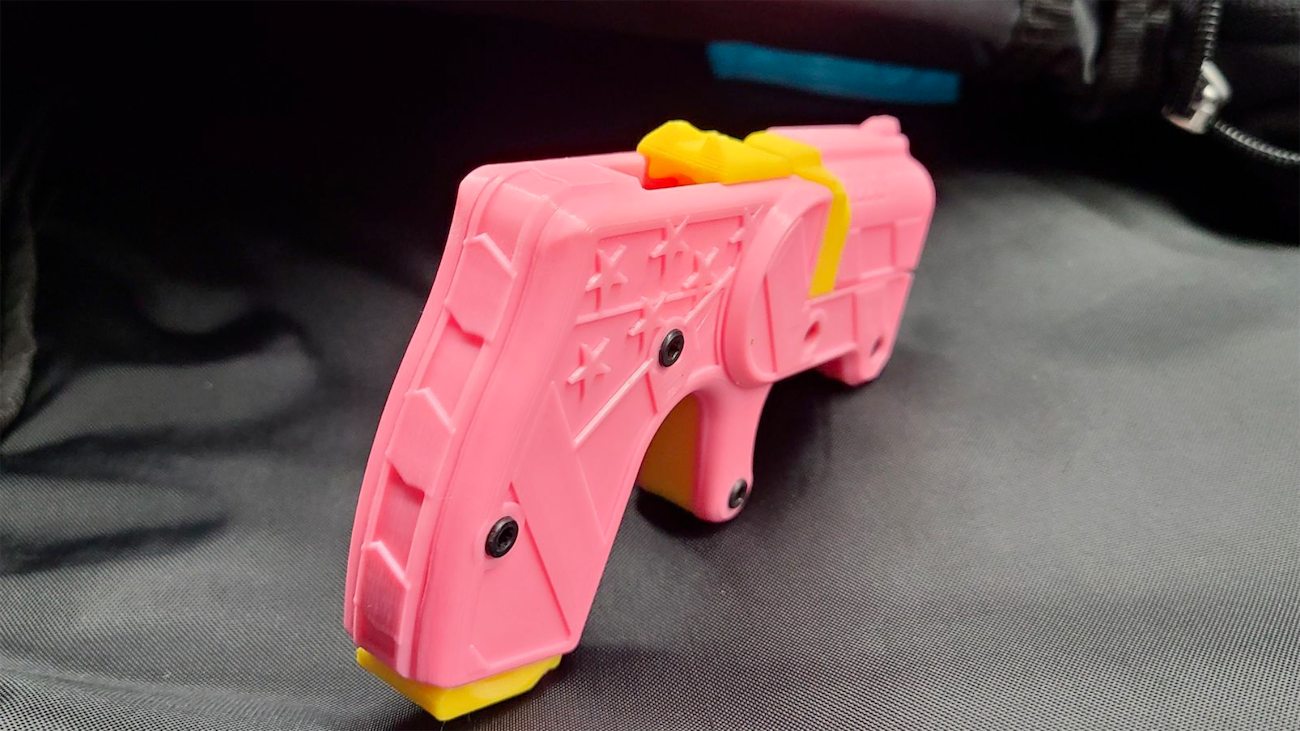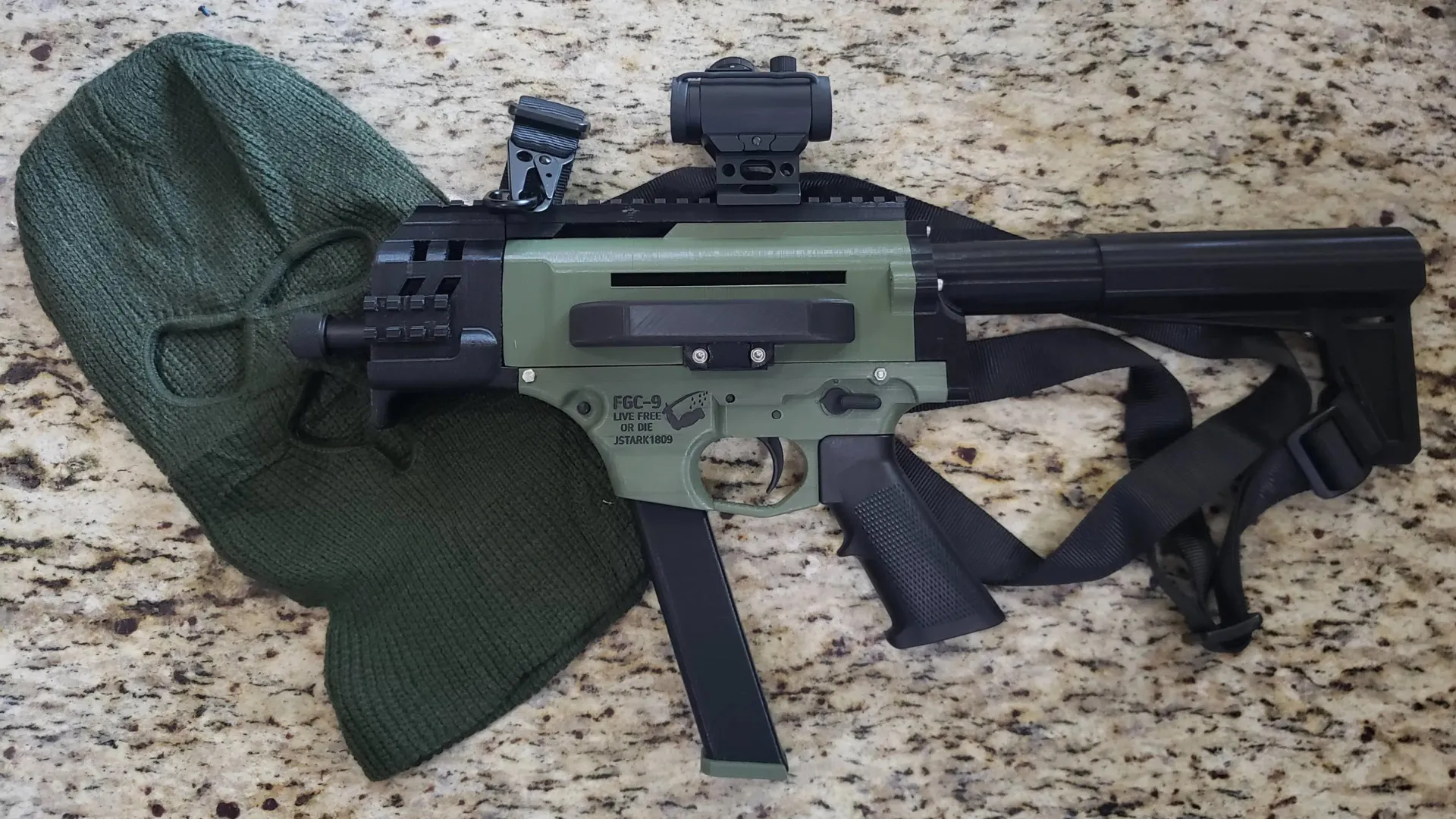A clear diagram of all of the AR15 parts is helpful with assembling, building, and understanding how the AR15 works.
The AR15 is very popular among weapon enthusiasts and professionals. The AR15 is versatile and easy to use, but it also has incredible customization options, which is why many users want to know all of its parts and a diagram to show you how it operates.


In 2022 you can even 3D print AR15 lower frames from the comfort of your home.
If you were also looking to get familiar with all the parts of an AR15 rifle, this article is for you! It will provide you with a list of AR15 parts and a detailed description/diagram of each component.
By the end, you will deeply understand all the parts that make up an AR15 rifle and get familiar with how it operates.
General Diagram of AR15 Parts
The AR15 is a complex semi-automatic, gas-operated weapon capable of firing one shot per trigger pull.

The AR15 consists of the following significant parts (from front to back):
- Muzzle device
- Barrel
- Handguard that protects the barrel
- Upper receiver parts
- Lower receiver parts
- Magazine
- Pistol grip
- Buttstock
Each of these part groups plays a vital role in the rifle’s proper operation, but its main components lie within the upper and lower receivers.
In the following section, we will break down each major group into its core components to better understand its role and function.
Detailed Diagram of AR15 Parts
In this section, we will analyze each major parts group of the AR15 rifle in detail, from the front to the back of the weapon.
Let’s begin:
Muzzle device
The muzzle device acts as a “brake”, preventing the rifle from going upwards from the effect of the recoil. It also aids in dispersing gasses and reducing sound when the round exits the barrel.
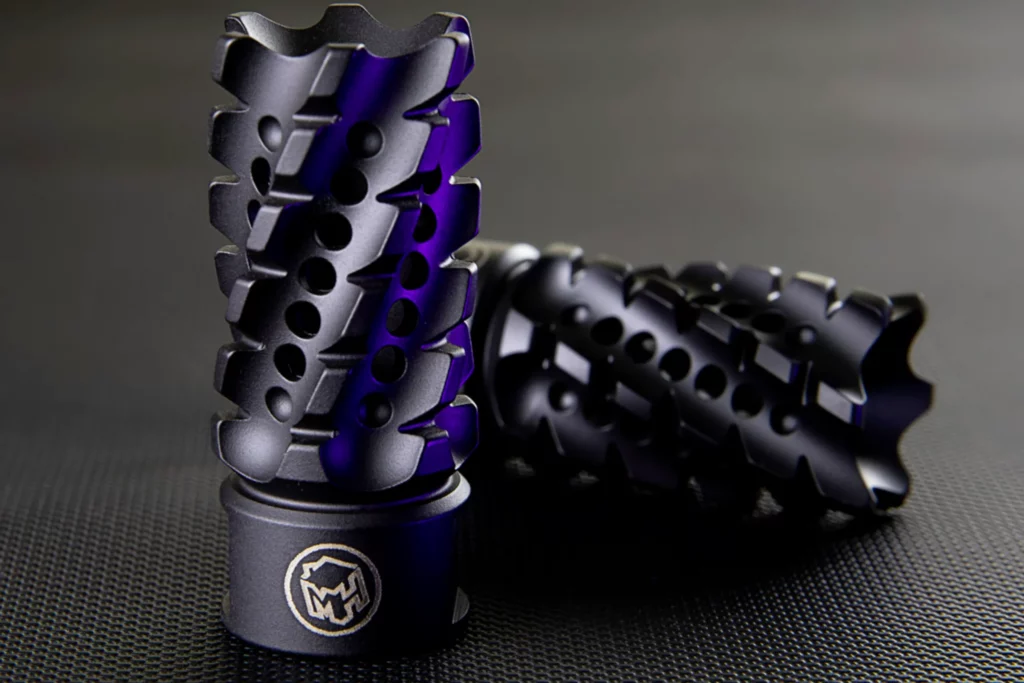
As a result, the rifle is stable and more precise.
There are several types of muzzle devices:
- Muzzle brakes – this type of muzzle device helps with recoil, making the weapon more accurate shot after shot; it disperses the gasses effectively to the sides
- Compensators – more effective in preventing the barrel from rising after firing a shot and keeping the rifle straight; they release the gasses upwards, compensating for the recoil kick
- Flash hiders – as the name suggests, a flash hider is a muzzle device meant to suppress, as much as possible, the flash produced by firing a round; soldiers use flash hiders on their rifles to conceal their firing position from the enemy
Barrel
As with any other weapon, the barrel is integral in providing maximum round velocity and increased accuracy.
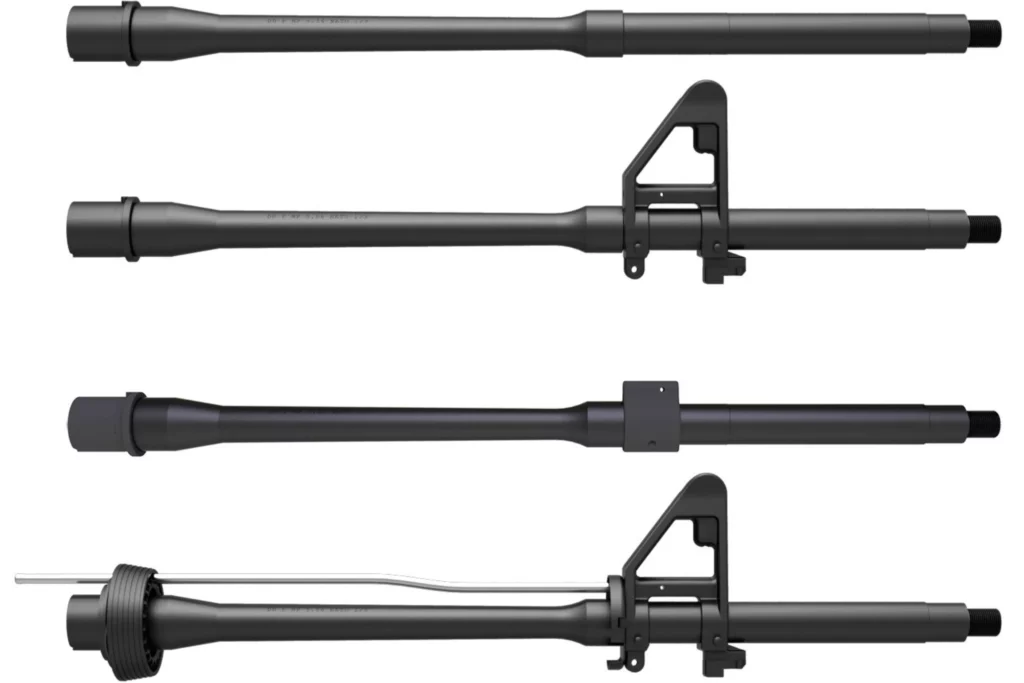
Important factors that determine the quality of the barrel are its weight, chamber dimension, length, materials, and manufacturing method.
There are three methods by which weapon manufacturers produce AR barrels:
- Hammer forging – a more expensive option by which a bored steel barrel is hammered around a steel rod with a reverse image
- Cut rifling – the barrel is made by a cutter, which cuts the grooves in the bore
- Button rifling – the barrel is made by pressing the reverse image of the grooves through the bore with a hydraulic press
AR15 rifle barrels are measured at 16-inches or longer, which is regulated by federal law. Rifles with barrels shorter than this are called AR15 pistols, with shorter or no buttstocks.
Handguard
The main hand of the shooter is responsible for the grip and trigger, while the other hand assists with aiming the weapon.

The handguard helps the aiming hand by providing a firm grip, safe from heat released by the barrel.
Extra Protective Rifle Cleaning Mat with AR15 Parts Diagram
The handguard is often manufactured to accommodate different accessories for the rifle, like lights, a front sight, a rifle laser, etc. For example, the Picatinny is a popular rail design for the handguard, to which many accessories can be attached.
Upper receiver parts
The upper receiver is one of the two most essential parts of the AR15 rifle. Here are all the parts of the upper receiver with short detailed descriptions:
Bolt carrier group (BCG)
The BCG or Bolt Carrier Group is responsible for loading the round, firing it, and then ejecting it from the chamber. All these actions are performed with the help of gasses produced by the round firing.

The BCG consists of a bolt, firing pin, cam pin, gas key, and extractor.
Gas block and gas tube
The gas block controls the amount of gas that leaves the barrel after a fired round.
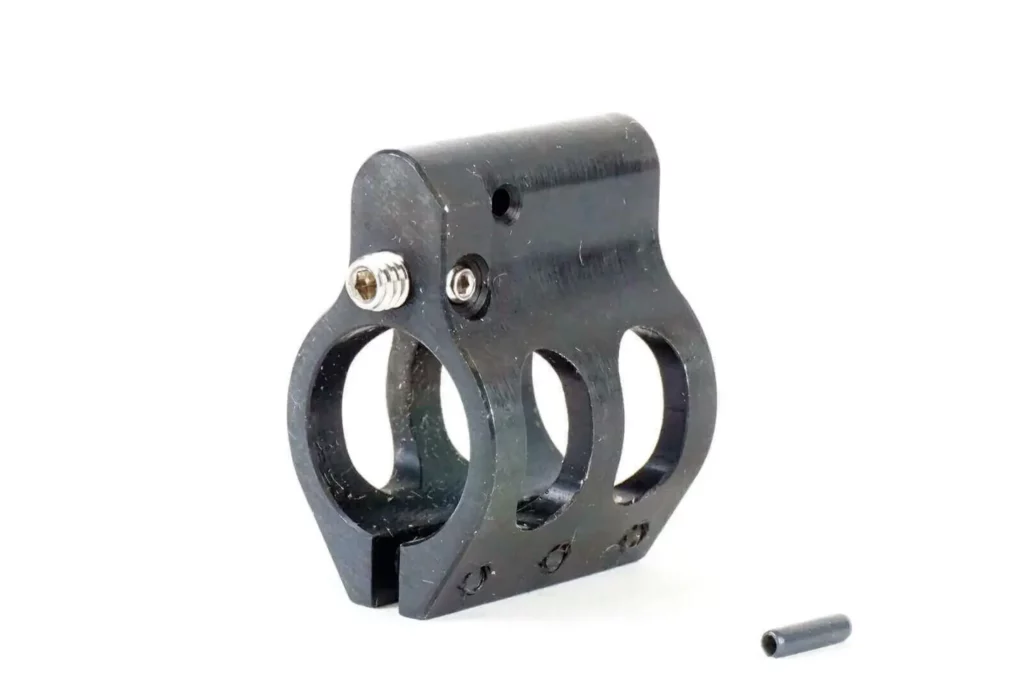
It also controls the amount of gas that enters the gas tube. The hollow gas tube allows gasses to pass through to the bolt carrier group.
Charging handle
Helps the shooter manually insert the first round into the chamber so the rifle is prepared for shooting. The shooter pulls the handle back and then quickly releases it to load the first round into the chamber.
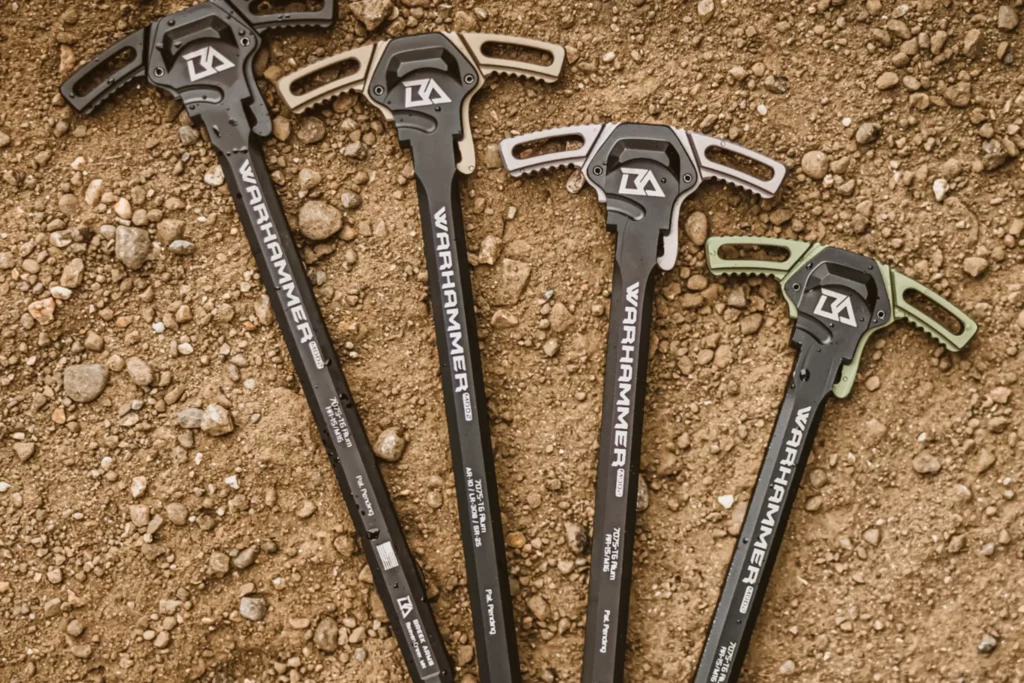
Pulling the handle backward also makes the entire BCG move as well.
Ejector cover (dust cover)
The used casings are ejected through the ejection port right after the round is fired.
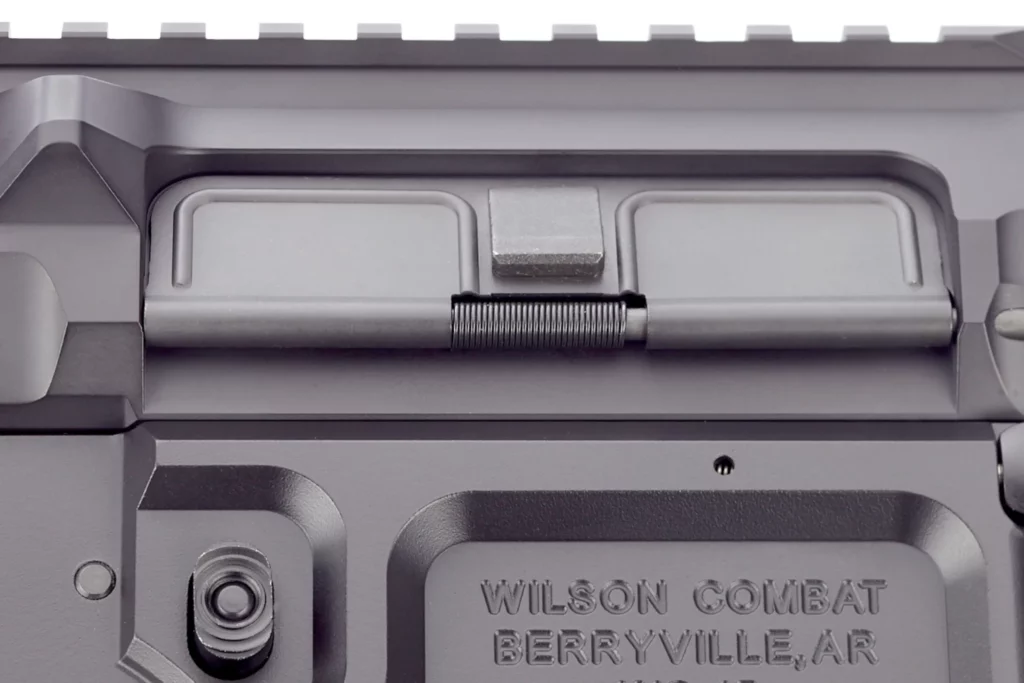
The port is closed when the rifle is not used to protect the BCG from dust and debris.
Lower receiver parts
The lower receiver is the part where the trigger is located and is also the part that contains the serial number of the AR15 rifle.
It is a very important piece, which is why it’s also considered as the firearm itself.
Here’s what the AR15 lower parts kit and receiver consist of:
Trigger
The trigger is the main part of the AR15 lower receiver, as it is completely housed inside its body. All the action from the rifle results from pulling the trigger, and the trigger itself is not just one piece but a group of pieces.
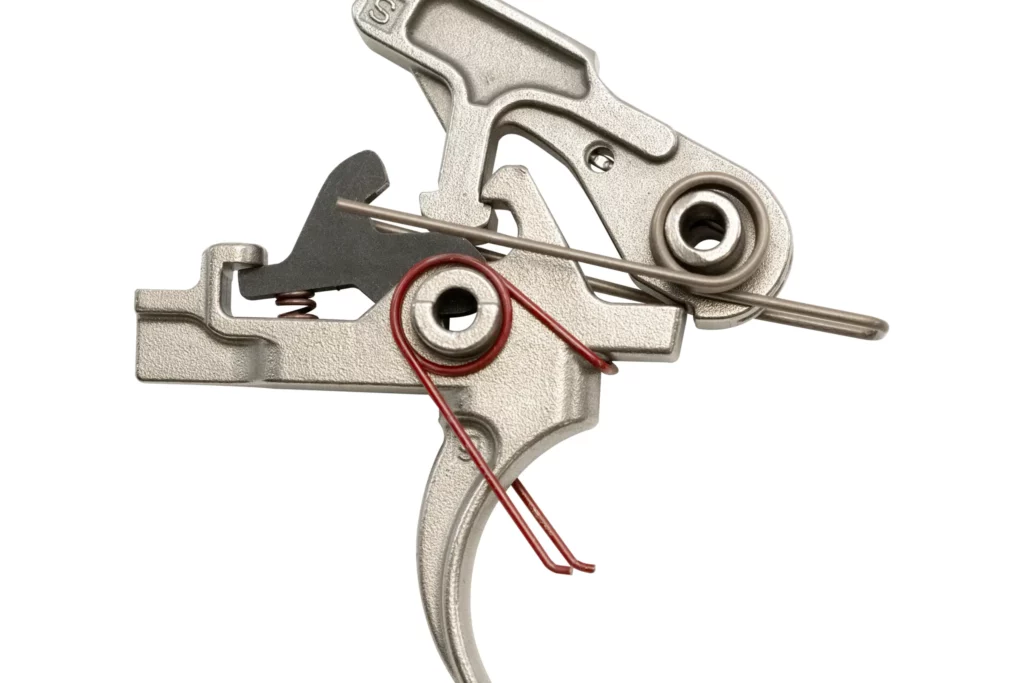
The pieces that make up the fire control group(FGC) are the trigger, disconnector, hammer, hook, pins, sear, and springs.
The trigger greatly affects the shot’s accuracy, and it needs to have a balanced pull, which is neither too heavy nor too light.
A trigger with a heavy pull will result in increased effort and shaking of the hand, while a trigger with a light pull may cause an accidental misfire.
Several trigger types are available, but the most common ones are:
Single-stage trigger
The single-stage trigger fires the weapon after pulling it. In other words, this type of trigger requires a single pull to a certain degree before it releases the hammer.
This is the standard trigger type that many beginners and intermediate shooters use.
Two-stage trigger
The two-stage trigger operates by involving two distinct phases. After the trigger passes the first phase, the shooter knows the weapon will fire.
Experts often use these types of triggers because it allows them to time their shots precisely and with greater accuracy.
Buffer and buffer tube
Both the buffer and the buffer tube are situated inside the lower receiver. The buffer tube houses the buffer but connects the lower receiver and the rifle’s buttstock.
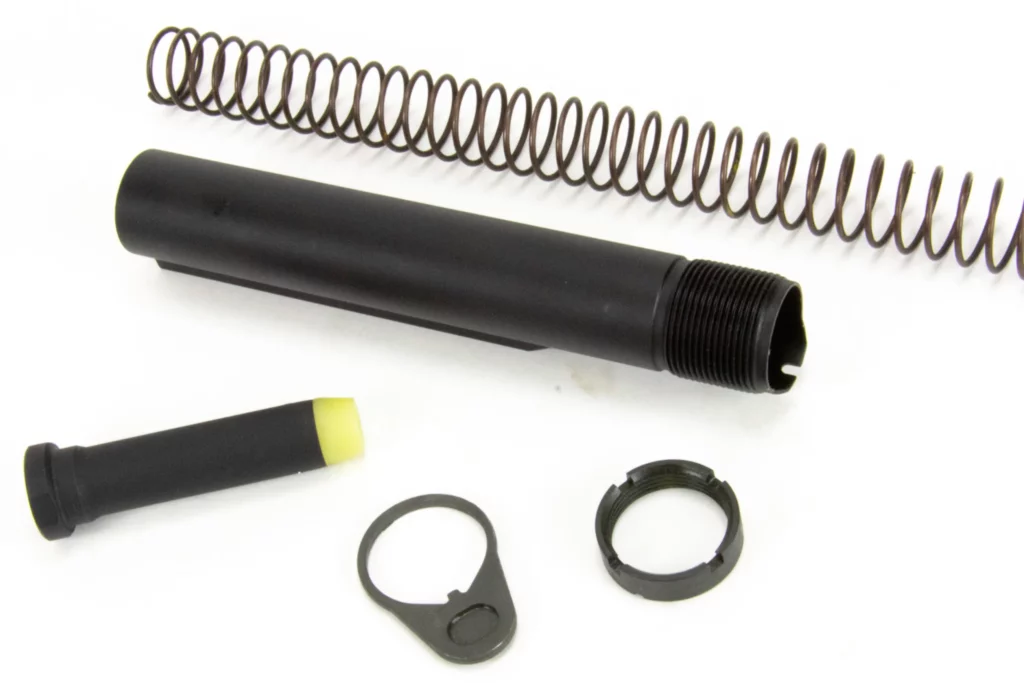
The buffer, on the other hand, helps with recoil force absorption after firing. Its main purpose, however, is to help the bolt move backward and forward when loading and ejecting a new round in the chamber.
Magazine
As you already know, the AR15 magazine holds the rounds (ammunition/bullets), but there are different types when materials, capacity, and caliber are considered.
Depending on state laws, civilians can use magazines with 10, 20, 30, or even 100 rounds.

On the other hand, caliber also plays a role in the magazine type, as the AR15 is a .223 caliber rifle, so it should use a magazine that supports those caliber rounds. It must also be reliable and easy to feed and eject.
Magazines are often made from metal, like steel or aluminum, but shooters have been making their magazines out of polymer materials using 3D printers. Both metal and polymer magazines are durable, heat resistant, and reliable.
Pistol grip
The pistol grip is the part the shooter grips with their main hand. A grip with an excellent design makes an incredible difference in handling the rifle, as well as ergonomics and accuracy.
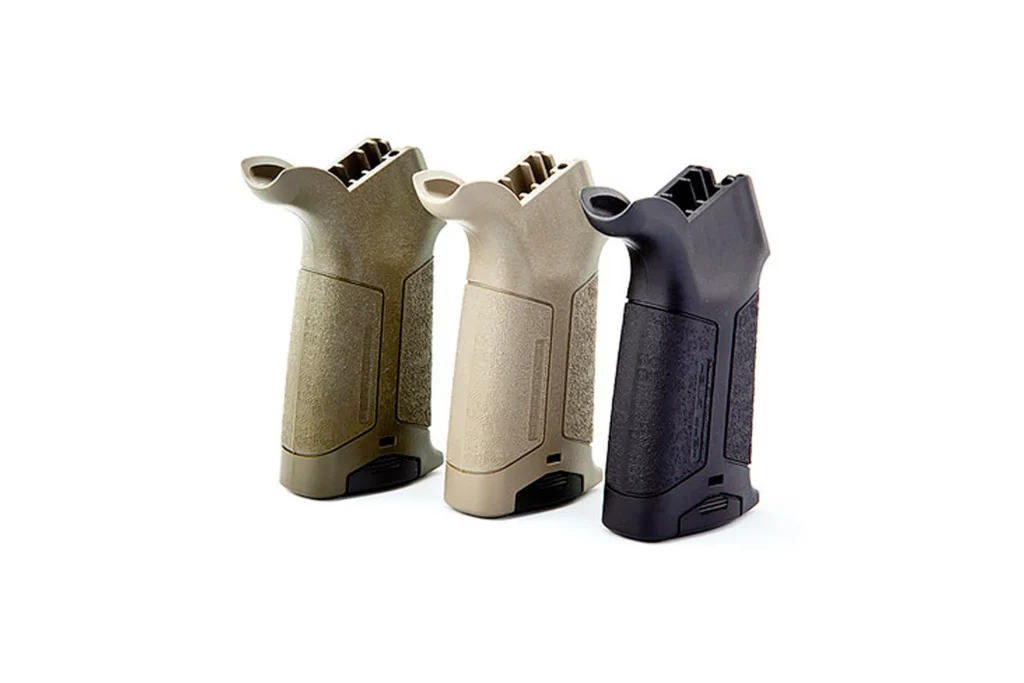
A good grip ensures that the shooter’s hand is numb-free.
Besides the main grip close to the trigger, the handguard also provides a grip for the other hand. This so-called foregrip provides stability when holding and aiming a long-barreled rifle.
The foregrip is also meant to provide better rifle control and recoil dampening and can usually be attached to the Picatinny mounting deck, for example.
Buttstock
The buttstock is the part of the rifle that is placed against the shoulder, and its role is to provide accuracy and stability when aiming by transmitting a part of the recoil onto the shoulder.
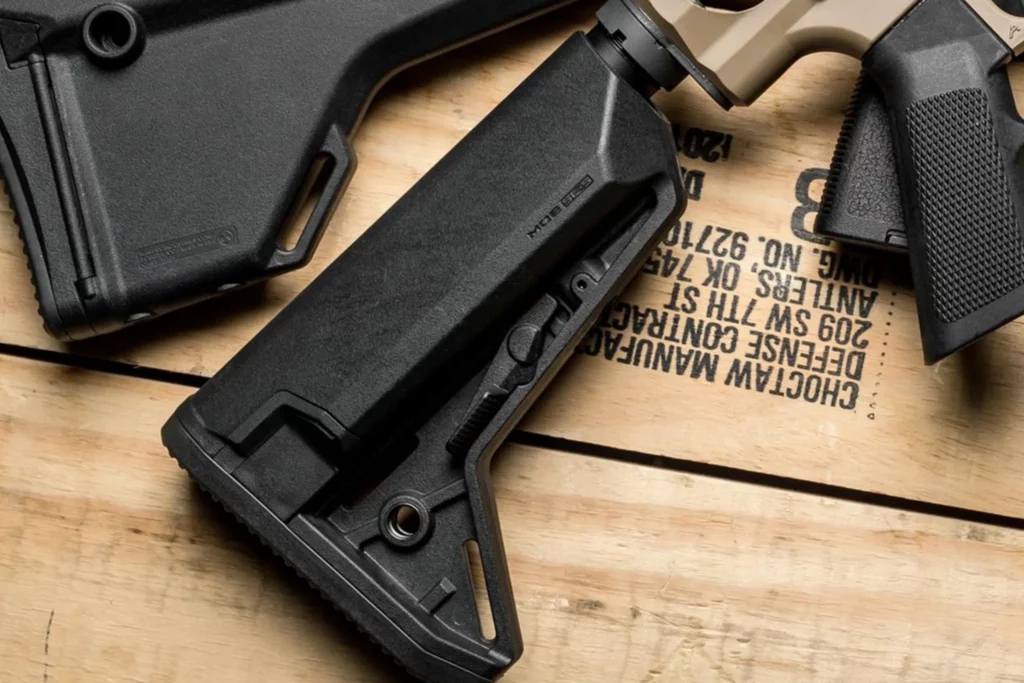
Buttstocks are versatile and customizable, with many different shapes, sizes, and lengths to choose from. It depends on personal preference but can also be fixed or adjustable.
A fixed buttstock is less versatile but provides more rigidity and stability. Whereas the adjustable one may have several positions to choose from, allowing the rifle to adapt to different firing positions.
Shop AR15 Parts
Conclusion
Now that you have a complete diagram of AR15 parts, you can use it for future reference when customizing your rifle or changing any stock parts.
This complete breakdown and diagram of the AR15’s parts can also be useful when cleaning your AR15 rifle.
If you have any comments or questions, feel free to leave them below, and we will try to answer them as quickly as possible.


